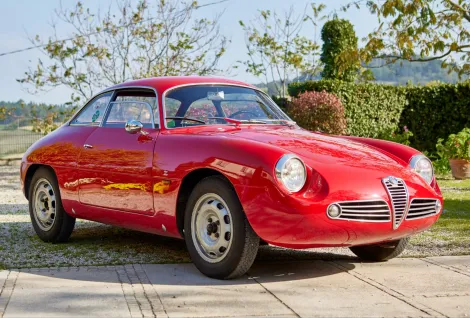What Are Bat Auctions?
bat auctions are specialized events where individuals can buy and sell bats, which may include sports bats, collectibles, or handcrafted items. These auctions can occur in several formats, primarily distinguishing between online platforms and in-person gatherings. They provide a structured environment where participants bid on various items, with the highest bidder ultimately acquiring the bat. The auction process typically begins with the listing of available bats, followed by a predetermined bidding period during which participants place their offers.
Various types of bats are commonly featured in these auctions. Sports enthusiasts often seek game-used bats from professional players, limited-edition models, or iconic designs that hold historical significance. Collectors may come looking for vintage or rare bats, while crafters might find interest in artisan-made pieces. Each bat auction can vary significantly in terms of the bats available and their associated histories, making the experience unique each time.
There are numerous platforms and marketplaces where bat auctions take place. Online, dedicated auction websites have emerged, allowing enthusiasts from around the globe to participate without geographical constraints. In contrast, traditional live auctions may take place at sporting events, charity fundraisers, or specialized trade shows, drawing a localized crowd of passionate bidders.
The appeal of bat auctions extends beyond just acquiring bats; it serves as a means for collectors and sports fans to connect over shared interests. Philanthropic elements also play a significant role, with many auctions raising funds for various charitable causes, thereby incentivizing participation. This combination of sport, community, and opportunity has contributed to the growing popularity of bat auctions amongst diverse groups of enthusiasts.
The History and Evolution of Bat Auctions
The practice of bat auctions can be traced back to the early 20th century, a time when sports memorabilia began to gain popularity among collectors and enthusiasts. Initially, auctions were small-scale events held at local sports clubs or community centers, where fans gathered to bid on used or vintage bats. Such gatherings laid the groundwork for what would eventually develop into a sophisticated market for bat auctions.
In the 1960s and 1970s, the emergence of dedicated auction houses marked a significant turning point. These establishments specialized in sports memorabilia, allowing collectors to participate in bat auctions on a larger scale. Places like Sotheby’s and Christie’s began hosting auctions that featured not just bats but an array of sports collectibles, elevating the status of bat auctions in the eyes of collectors and investors alike.
As the years progressed, several milestone events demonstrated the enduring appeal of bat auctions. One memorable moment occurred in 1999 when a bat used by baseball legend Babe Ruth sold for a record-breaking sum, drawing widespread media attention. This sale underscored the financial viability of bat auctions, attracting new collectors who viewed them as investment opportunities.
The advent of the internet in the late 1990s brought about another evolution in bat auctions. Online platforms such as eBay enabled bidders from around the globe to participate in auctions without geographical constraints. This shift not only expanded the audience for bat auctions but also introduced innovative bidding methods, including proxy bidding and timed auctions. As a result, the bat auction landscape experienced unprecedented growth and accessibility.
In conclusion, the history and evolution of bat auctions illustrate how a simple local event transitioned into a global phenomenon. Understanding this background is essential for enthusiasts looking to navigate the dynamic world of bat auctions today.

How to Participate in Bat Auctions: Tips and Strategies
Participating in bat auctions can be an exhilarating experience for collectors and enthusiasts alike. To maximize your chances of success, it is essential to approach the process with a well-crafted strategy. Begin by conducting thorough research on various auction platforms. There are several reputable websites and auction houses that specialize in sports memorabilia, each with its own unique set of offerings and features. Ensure that you read reviews, understand the bidding process, and familiarize yourself with the terms and conditions associated with the platform.
Once you have selected a platform, it is important to refine your focus on the type of bats you are interested in. Bat auctions may feature a diverse array of items, ranging from modern-day bats used by professional players to vintage pieces with historical significance. By narrowing down your interests, you can streamline your search and concentrate your bids on bats that truly resonate with you. Additionally, consider setting a budget prior to entering the auction. This allows you to engage in the bidding process without the risk of overspending, keeping your financial goals in check.
When it comes to bidding effectively, timing can be crucial. Monitor the auction closely; last-minute bids can change the dynamic entirely, so be prepared to act swiftly. Evaluate the bats before placing your bids, paying attention to factors such as the bat’s condition, provenance, and any accompanying documentation that might enhance its value. Engaging in bat auctions also requires an awareness of common pitfalls. Avoid getting into bidding wars that can inflate prices unnecessarily, and do not succumb to impulse buys without sufficient research. By employing these tips and strategies, you will be better equipped to navigate the exciting world of bat auctions confidently.
The Impact of Bat Auctions on Collecting and Philanthropy
Bat auctions have emerged as significant events that not only fuel the passion for collecting but also contribute to philanthropic efforts within various communities. The allure of acquiring unique bats, whether vintage or modern, attracts collectors who appreciate the historical and cultural significance of these items. This dynamic fosters an environment where enthusiasts can converge, sharing their knowledge and enthusiasm while expanding their collections. As a result, bat auctions have transformed into vibrant social gatherings, enriching the collecting hobby.
Moreover, these auctions often serve as a vehicle for fundraising, reaching beyond mere commerce. Many organizations harness the enthusiasm surrounding bat auctions to support charitable causes. Items donated for these auctions typically include rare bats or memorabilia linked to famous players, with proceeds directed towards community-centric initiatives such as youth sports programs or health awareness campaigns. This intermingling of collecting and charity amplifies the purpose behind each auction, turning every bid into an investment in the community’s welfare.
Several successful bat auctions illustrate the profound impact these events can have. For example, an auction held to support a local children’s hospital managed to raise significant funds through the sale of autographed bats from legendary players. The event not only attracted collectors but also engaged the broader community, highlighting the importance of supporting local causes while enjoying the thrill of bidding. Such examples demonstrate how collecting can transcend personal interest, evolving into a collective effort that reinforces community bonds and promotes charitable endeavors.
In conclusion, bat auctions signify more than just an opportunity to acquire prized items. They represent a flourishing intersection of collecting and philanthropy, encouraging community engagement and fundraising. As the culture surrounding bat auctions continues to grow, so too will their potential to impact both collectors and the causes they support.





